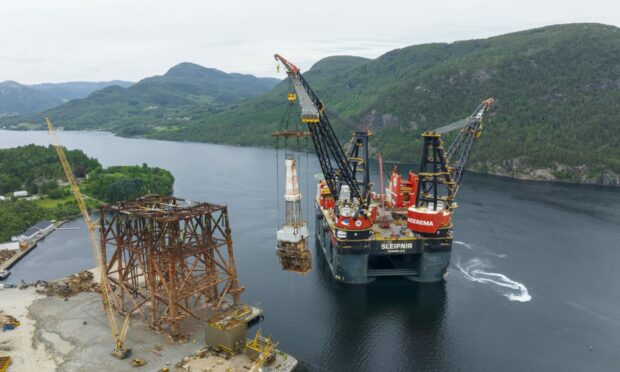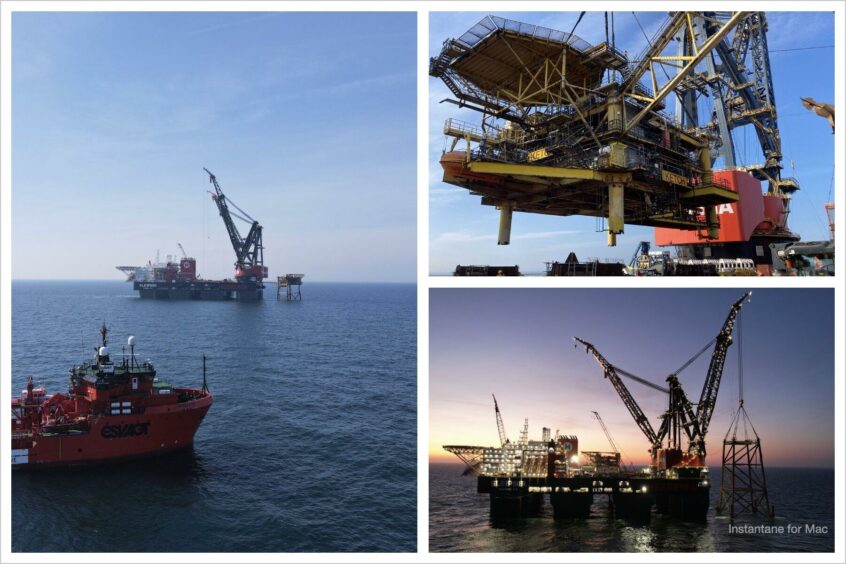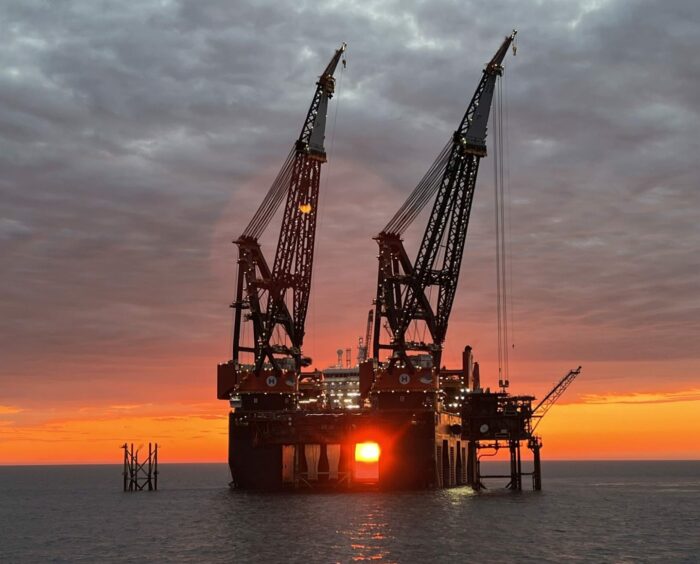The cost of decommissioning UK North Sea oil ands gas installations has ballooned to £40 billion.
Inflationary pressures and other sectors competing for vessels and services – such as offshore wind – are pushing up the price tag, new figures from the North Sea Transition Authority (NSTA) show.
Another £3bn has been added to the total since the tail end of last year, when the industry regulator put the estimated bill for cleaning up offshore at £37bn.
But NSTA remains hopeful the oil and gas industry “can overcome these hurdles”.
It aims to reduce the North Sea decommissioning bill by 10%, to £33.3bn, by 2028.
Size of the decom prize
It is also using its latest decommissioning cost report to highlight the scale of the opportunity, with £21bn of spend in the pipeline expected up to 2032. Equating to roughly £2bn a year for the next decade, NSTA hailed it as a “massive” chance to keep developing skills and experience in the North Sea.
This is, in turn, predicted to help the domestic supply chain “win lucrative contracts overseas” by reinforcing the UK as a “global leader” in retiring oil and gas infrastructure.
NSTA supply chain and decommissioning director Pauline Innes said: “The sector is in a good place. Work that has happened in the last few years to embed decommissioning cost efficiency in the head of operators and suppliers has really started to take traction.
“The coming decade is going to be incredibly important for us, because that’s when a lot of the work will happen.”
She added: “Inflation is still a big part of every business context at the moment – that has demonstrated to us that companies really need to redouble their efforts. Decommissioning in the UK is a long-term opportunity for the supply chain, one that offers certainty and longevity. There are very few sectors that can say that.”
£1.6bn was spent on decom last year
Between 2017 and 2022 industry spent a total of around £8bn on decommissioning in the UK North Sea, according to NSTA’s new report.
A significant part of that, £1.6bn, was spent in 2022 alone – more than in any of the previous five years – as companies got on with shutting down redundant wells and removing infrastructure.
Domestic supply chain firms are expected to benefit significantly from the future spend.
Ms Innes said: “The industry is ideally placed to realise the massive £21bn opportunity which will come its way over the next 10 years. There has been a reputation in the industry of deferral of work, but the £1.6bn of spend last year tells us we are now beyond that and into full delivery mode.”
Reducing the cost of decommissioning will be “challenging”, Ms Innes said, adding: “There’s not a lot of low hanging fruit; this truly is about different contracting models and finding different types of delivery.”
NSTA is urging operators to embrace new technologies and commercial models. The regulator is also pushing them to deliver on agreed schedules, work more collaboratively with suppliers and share details of plans at an earlier stage.
Bob Fennell, co-chairman of the NSTA’s Decommissioning and Repurposing Taskforce and North Sea executive vice-president at Harbour Energy, said: “Collaborating and sharing data is an important first step to providing the supply chain with the visibility and confidence they require to meet UK demand for such works in a timely and cost-competitive way.”
New decom metrics on the way
NSTA plans to introduce new key performance indicators and benchmarks – developed with industry and underpinned by new data, including the length of time taken to complete specific tasks, number of crew members employed and types of vessel used.
It is hoped these will provide a more complete picture of how well projects are planned and executed, helping the whole industry to identify new opportunities for cost savings.




Conversation